Chillies and peppers are a really easy to grow, easy to use and easy to store set of edibles. Both chillies and peppers are closely related, grown in a similar way. They love warmth and for chillies, reward with giving it back! Chillies can pack a lot of heat, but come in a range of different heat levels from super hot to no heat at all. Peppers sweet rather than hot, available in a range of delicious colours.
Chilli and pepper seeds are given away all the time because they are among the easiest edibles to grow. Even if you have no garden you can grow a substantial number on your windowsills inside.
I sow chilli and pepper seeds in the last month of winter (February in the UK) when daylight hours are just starting to get longer but before spring has arrived. This gives the chilli and peppers a head start for a longer growing season, useful because it takes them longer than other vegetables to flower and crop.
1) Order chilli and pepper seeds and write labels
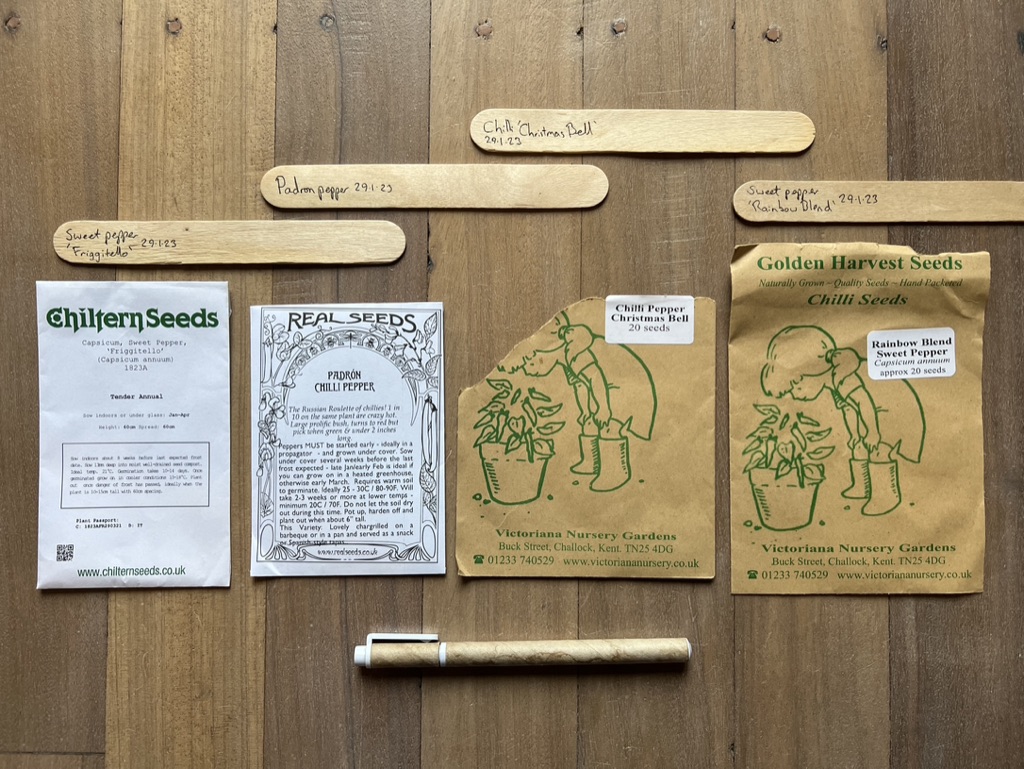
I always grow a mix of red chillies for heat, padron peppers for starters and sides and sweet peppers to add into cooked meals and salads. We like our chillies at the no spice to some spice end of the scale, rather than the eye watering, sweat inducing end. Whatever you like, they are incredibly easy to grow from seed. The key ingredients to growing are warmth, direct sunlight and as long a growing season as you can give. They’re slow growing, making it best to start early.
For labels, I use bamboo or wooden labels using a permanent pen. Add the name of each and the sowing date to a different label. These are really important to know what you are growing later for spacing when putting into bigger pots or planting out, also harvesting. It’s very easy to mix up chilli and pepper plants before they fruit making it hard to know the difference between an unripe hot chilli and a ripe sweet pepper! I write the labels before sowing to get them ready.
2) Fill trays with peat free compost and make tiny indents using the label
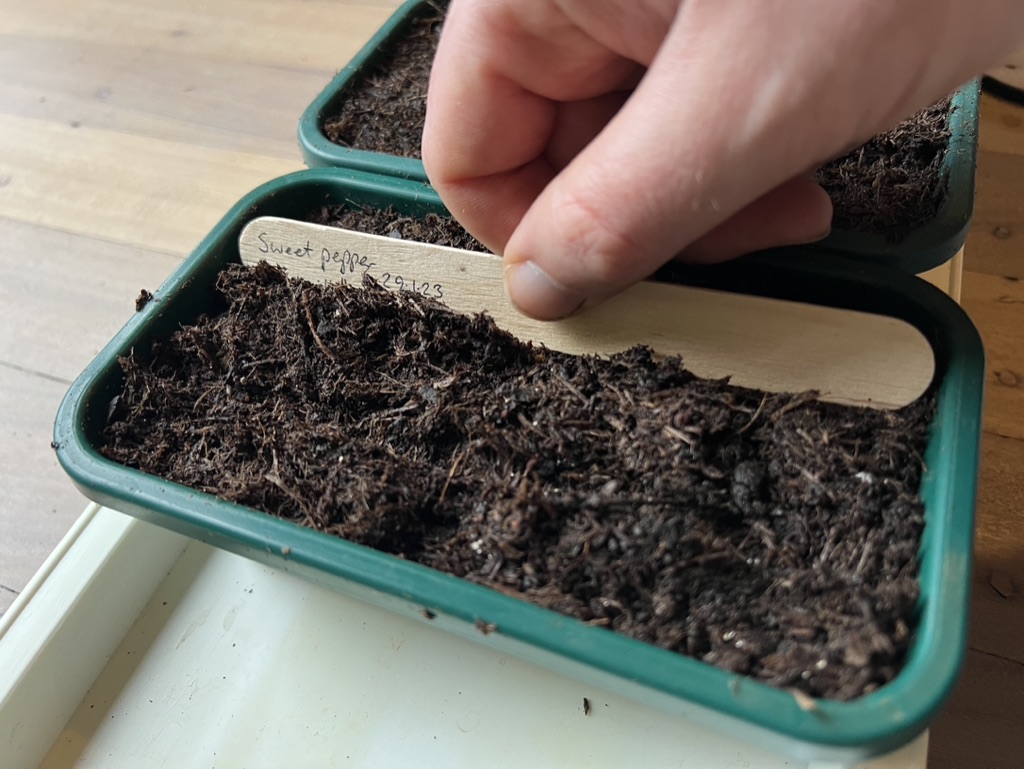
3) Sow one seed every few centimetres on the surface
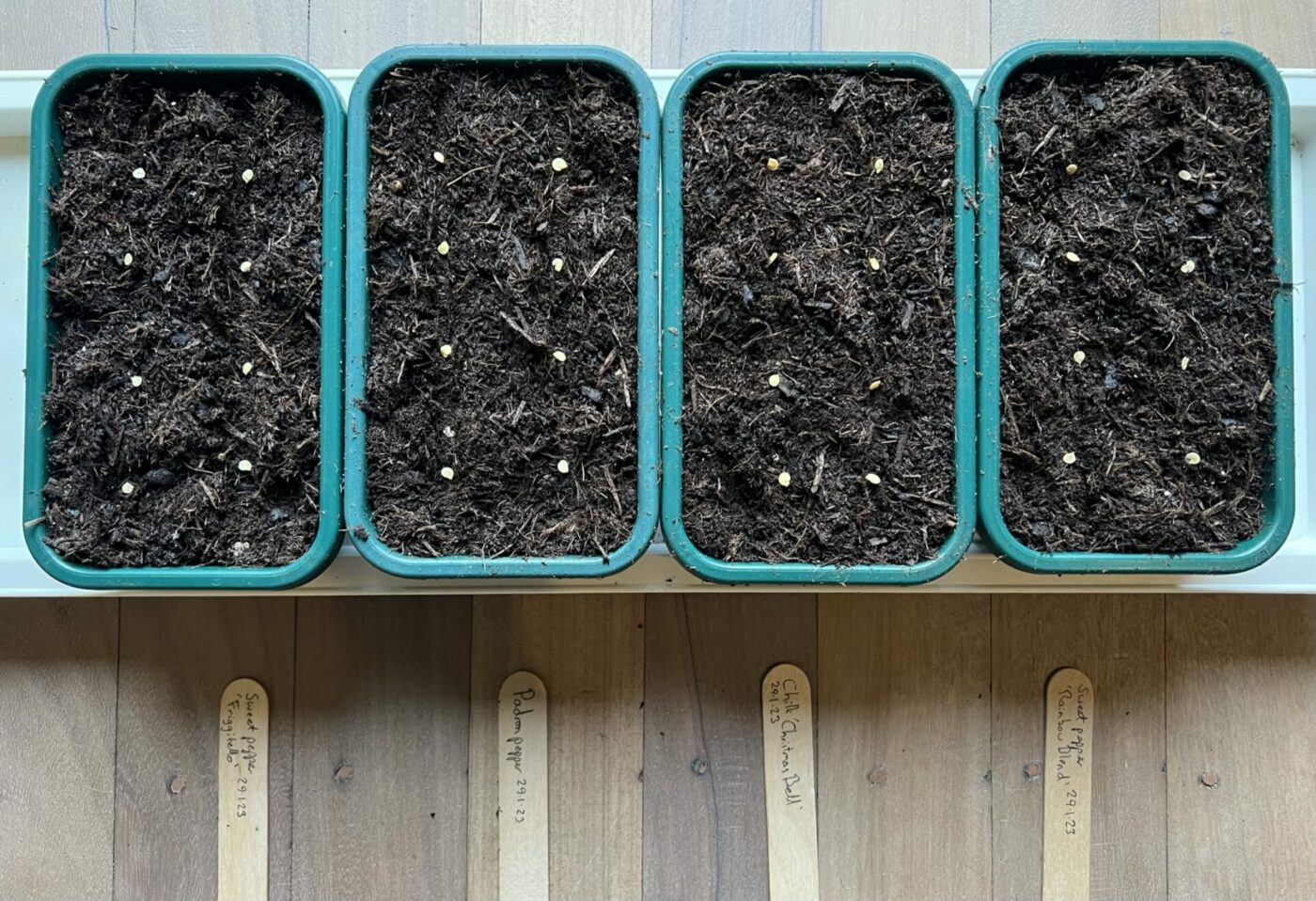
Keep the labels next to the correct tray or do one at a time to avoid mix ups. Don’t stick into the compost because the lids need to go on first.
4) Brush a little compost over the seed to just cover it
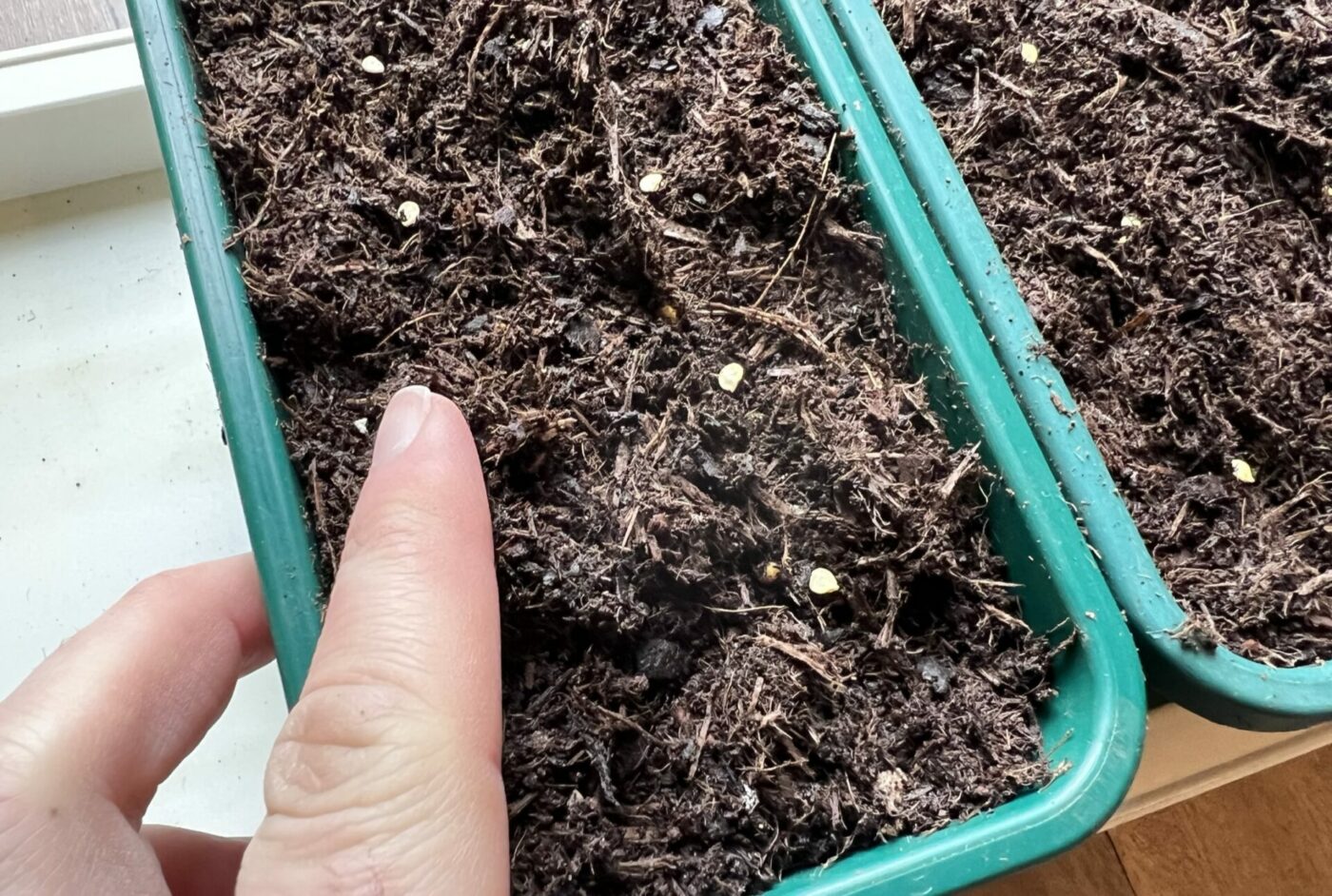
5) Cover with a lid to lock in moisture and warmth
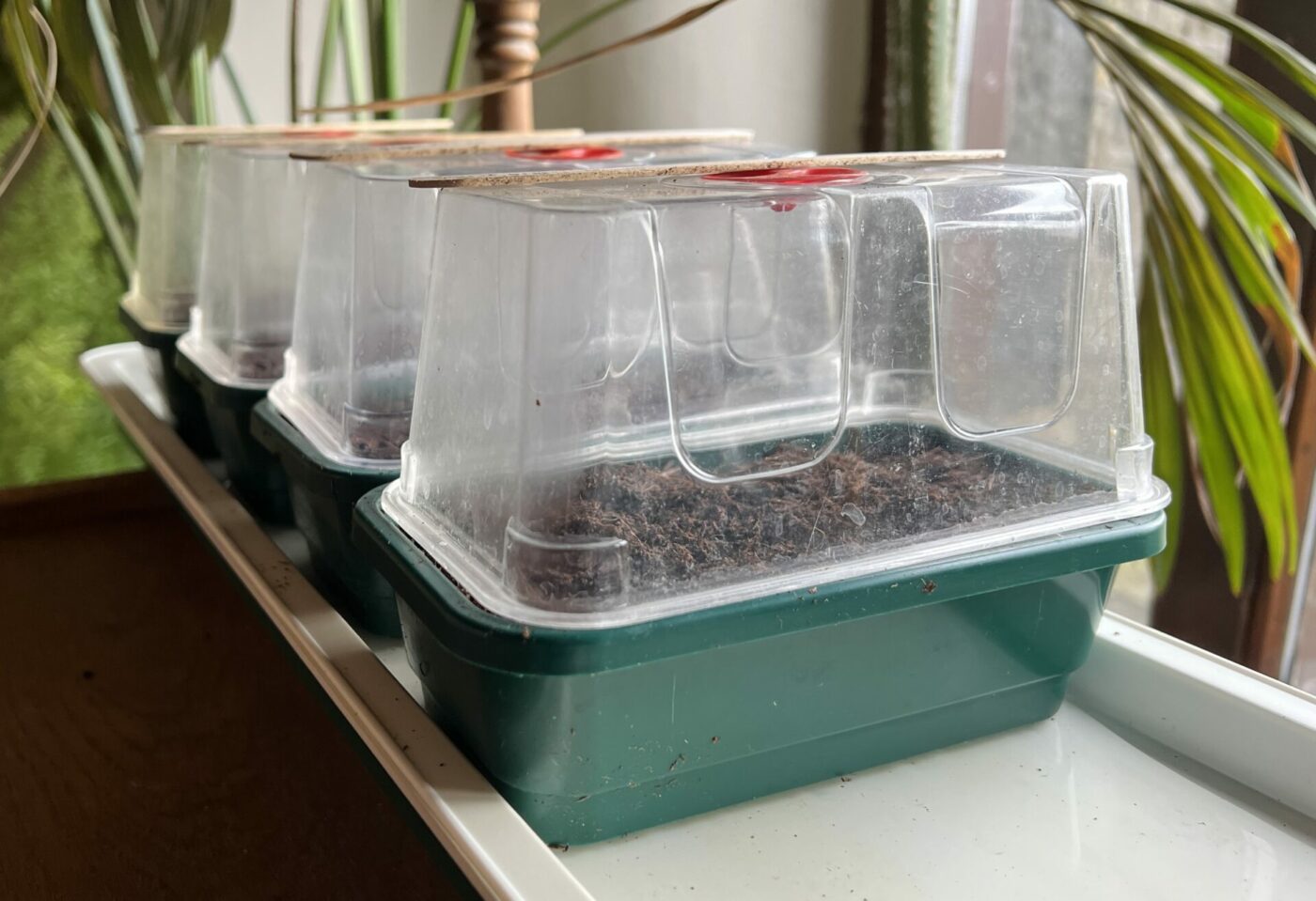
Cover with a lid, glass or biodegradable cling film until they germinate. Place in a sunny warm location such as a heated greenhouse or, as I do, on a sunny windowsill with a heated propagator. Germination can take a week or two, so wait until they all have their first leaves, then remove the cover.
6) Water from below
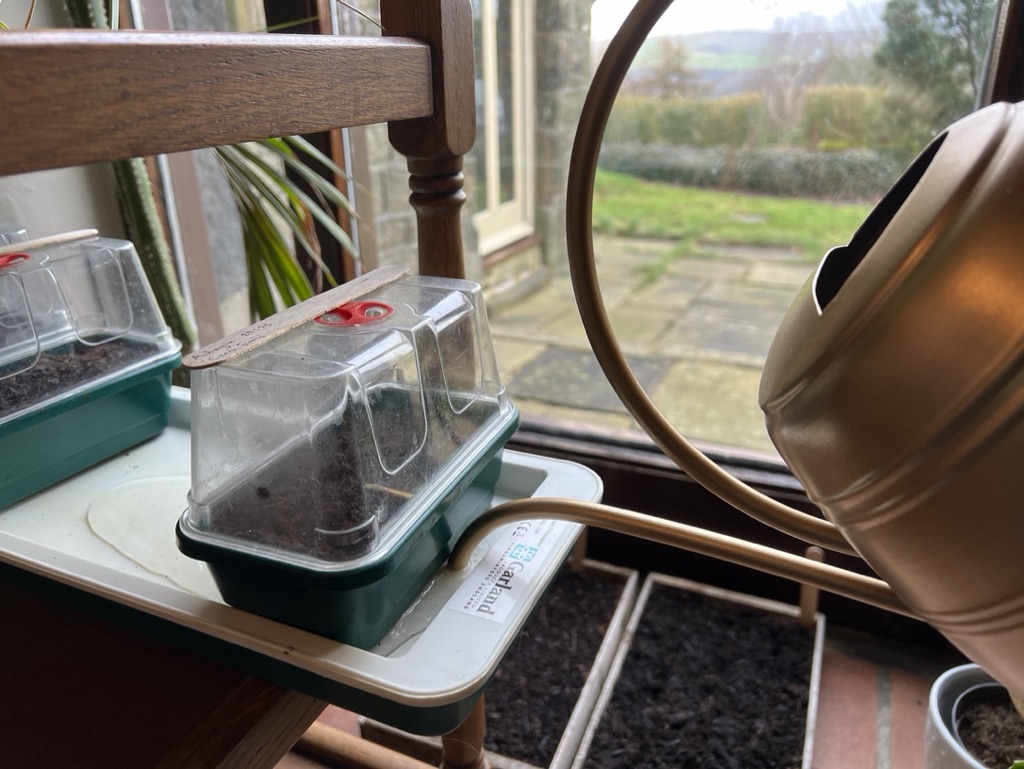
If you can, I always find it better to water seedling trays from below, as shown above. Compost should absorb water like a sponge. Learning to not over water seedlings is key, it mustn’t be completely soggy like a loaded sponge, but damp like a wet sponge that has been wrung out. If you’re unsure, add a little water every ten minutes or so until you can see the compost at the top is slightly damp but not glistening and soaking. The biggest mistake people make with seedlings, including me from time to time, is to overwater them.
When they have two proper leaves, following the initial seed leaves (four leaves in total) lift them out by a leaf, using a pencil or fork to gently lever the roots out without damaging them. Pot them up into individual 7cm pots. You can always start them all in the 7cm pots to start with if you have space.
Grow them on and pot up into larger pots to an eventual final pot of 20cm, terracotta is ideal for its porosity allowing water escape and air transfer. Or plant out.
How to grow chillies and peppers
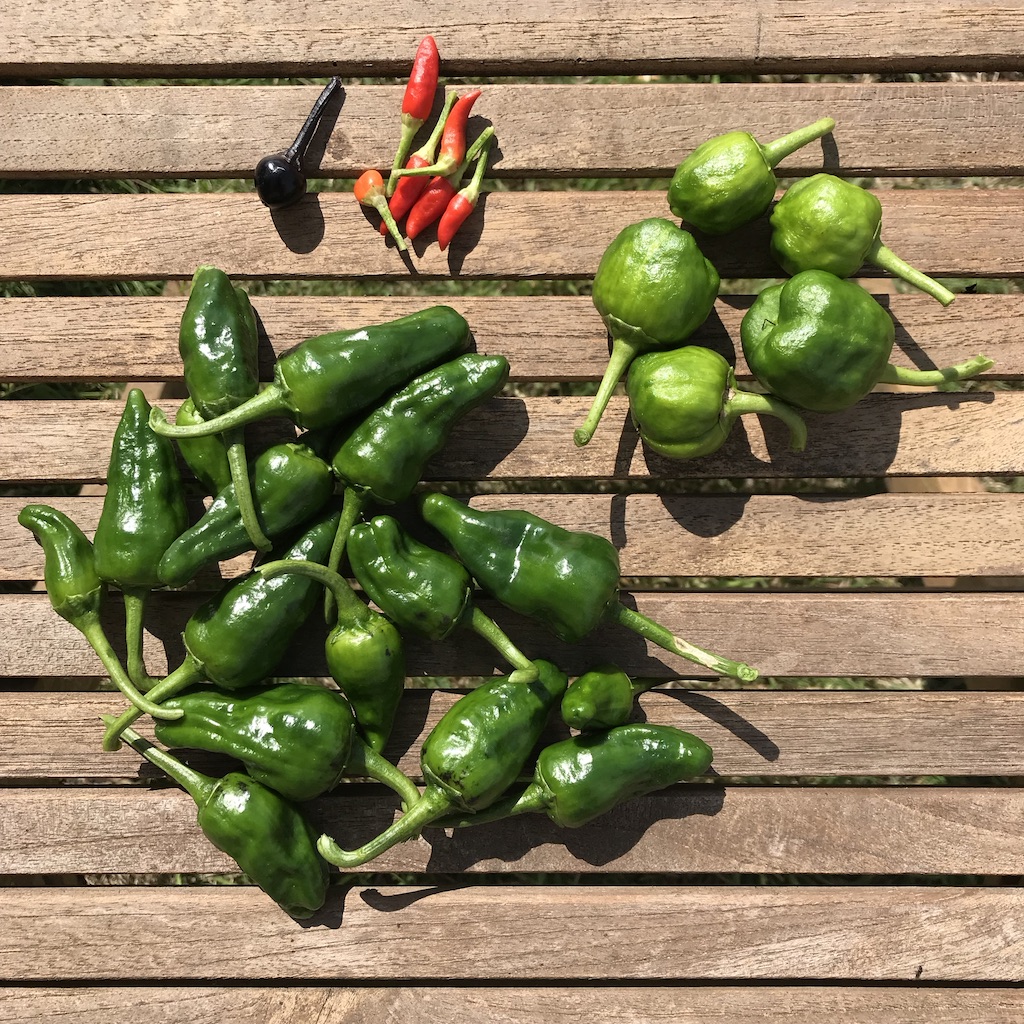
Key to remember is that chillies and peppers lurve the heat, it’s like they absorb all warm energy and use it to power their spiciness. If chillies were a person they’d be slathering themselves in tanning lotion next to the pool and sunbathing constantly.
As such, chillies and peppers must be grown in full direct sunlight and won’t tolerate temperatures below 10C, growing best in the 18C+ range. You can grow them in pots of peat-free compost on windowsills inside, window ledges and patios outside, in greenhouses and polytunnels. In warmer climates you can grow chillies directly in the ground of more exposed areas outside in summer.
I’ve grown chillies and peppers outside in 20cm pots on our patio and also in the ground very successfully on my London allotment with no cover whatsoever where they revelled in the sunlight.
Watering and fertilising
Chillies and peppers need regular watering in summer and fertilising with a high potash fertiliser every couple of weeks to help increase cropping. I use liquid seaweed made for tomatoes or homemade comfrey feed fortnightly through summer.
Pinch the tops and pick often
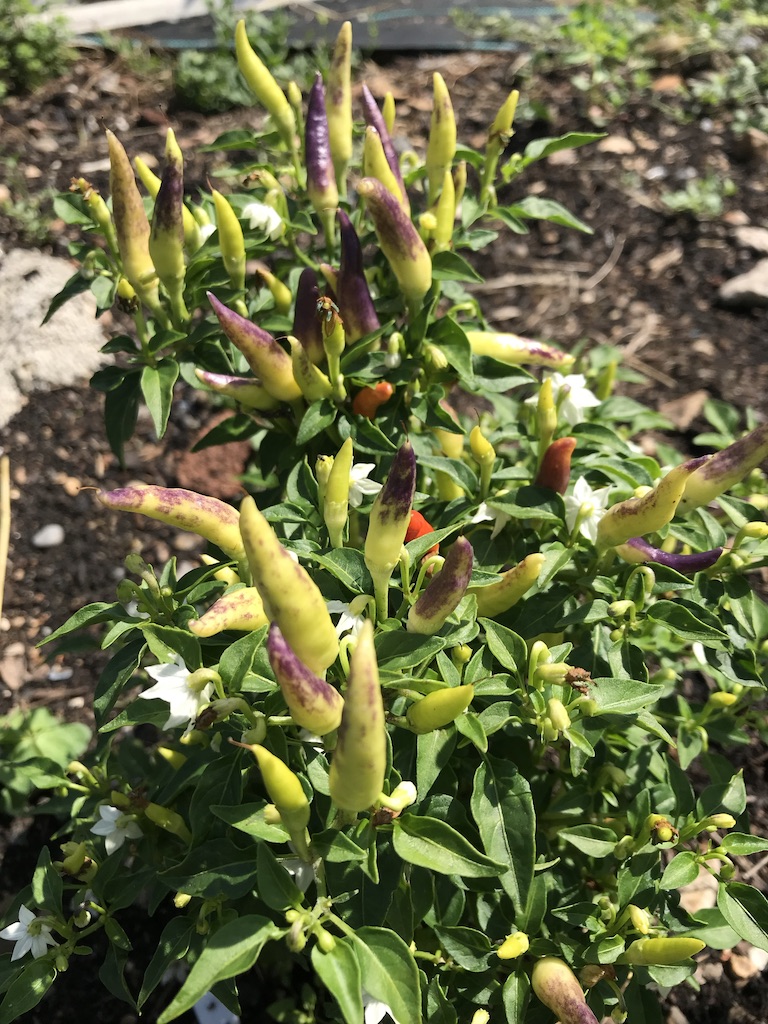
Pinch off the top main shoot at about 30cm to force branching lower down. Once chillies and peppers start ripening, pick them regularly for a continuous crop.
A perennial secret
Although many people grow chilli and pepper plants as annuals they are in fact a perennial shrub. If you have space, one of the advantages of growing them in pots is that in winter you can bring them indoors in the warmth to keep them alive until the next year. Older plants produce even more chillies because they’re stronger and earlier to start growing, established and full of energy from previous year/s.
When bringing them inside in late autumn, snip their branches back to the first leaf joint from the main stem. That sounds brutal but it reduces stress and new shoots will emerge in spring. This will force additional branching and extra branches means larger numbers of flowers and chillies.
Water them less frequently during winter to avoid rot, keeping them just on the dry side of damp. They won’t use much water during this time because they’re not growing.
I treat them like bonsais and root prune them in spring once the weather warms up and growth resumes. Sawing off the bottom 30-50% of roots (you can use a bread knife if you don’t have a hand saw), disposing of them and refilling the space at the bottom of the pot with fresh compost.
If you don’t have space for this, don’t worry, growing from seed each year is fine and provides more than enough chillies to eat.
Different levels of spiciness
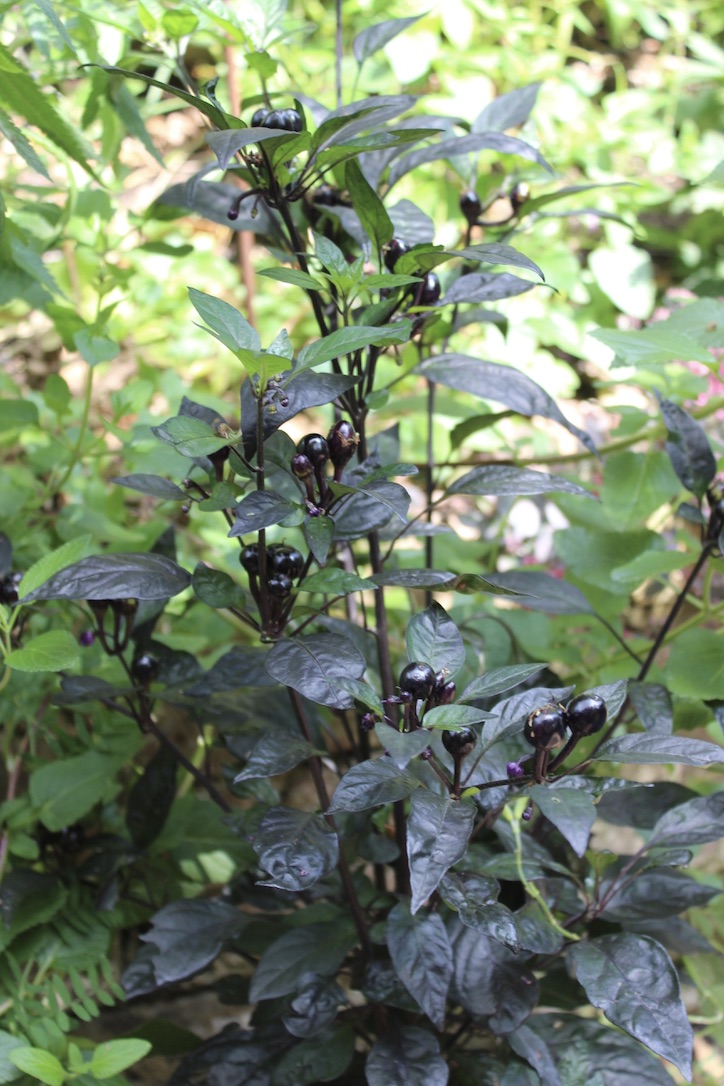
Chilli spiciness is determined by something called the Scoville scale – which has a backstory involving some loon called Scoville who ate lots of chillies but I’ll leave you to Google that as right now, I don’t care. All we need to know is that spiciness is measured in Scoville Heat Units (SHU).
OK, I suppose I should explain. Wilbur (strong name) Scoville was a pharmacist and took a more scientific approach to chilli heat than I flippantly suggested above. Basically, chillies contain a substance called capsaicin that produces the heat in our mouths through some kind of reaction you can read more about on Wikipedia.
The SHU of each chilli is determined by the amount of capsaicin contained within it. Clever. The Scoville scale (which I reckon should be renamed the Spiciness Scale as I shall now call it) runs from 0 for not spicy at all, to 3,000,000. Yes, that’s 3 million or more on the Spiciness Scale. As I’m sure you can guess, 3 million is enough to blow your head off. It’s quite literally given people heart attacks.
Cayenne peppers sit around 20,000 – 30,000 SHU and tastes pretty hot to me and I suspect is my limit of chilli eating enjoyment. Scotch bonnets are notoriously goddamn spicy and have around 200,000 SHU. Far too hot for me to enjoy except in a misguided challenge with friends to eat the hottest chilli.
Put it this way, I once grew and ate ‘Royal Pearl’ chilli at 60,000 SHU and it made me cry involuntarily and struggle to breath for about 20 minutes. Leading me to conclude anyone who eats a 3 million SHU chilli is mad or superhuman.
People say milk cools the heat but as the thought alone of drinking neat milk makes me gag, I’ve preferred to suffer.
Using chillies and peppers
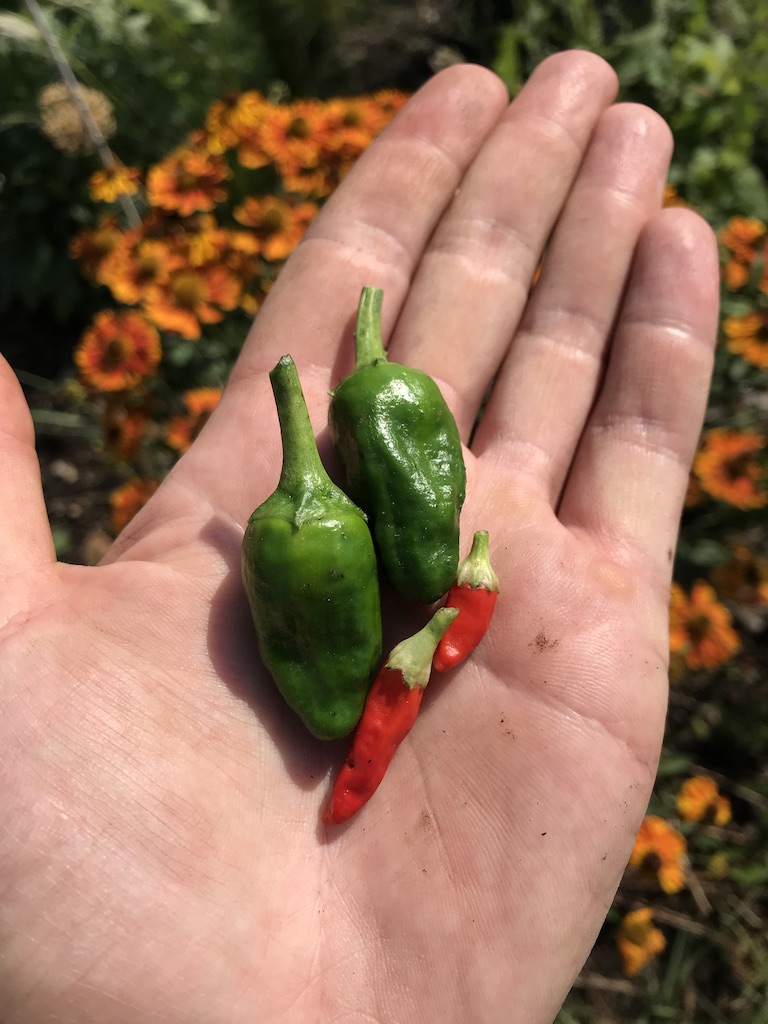
One of the reasons I love Padrón and less-spicy chillies is that they become more of a vegetable consumed en masse, giving meals substance. Padróns can be brief or grilled to lightly cook. Sweet chillies can be eaten raw or added to salads.
Spicy chillies can be used in the same way but the hotter they get, they more they become like herbs to change the flavour and heat of dishes.
Chillies are easy to store all through winter by drying on a flat tray or threading cotton through them like a necklace to hang in a dry, dark cupboard. You can then leave them like that or store in a jar. Fresh chillies can also be frozen or stored in oil.
Peppers on the other hand are best used fresh, though you can slice them and freeze for use later.
Have you grown chillies? If so, which varieties do you recommend? Which are your favourites?
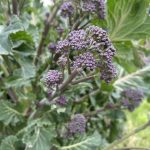

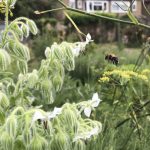
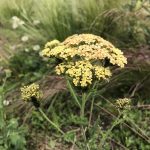
We won’t hold this against you!
Despite the current vogue for growing THE hottest varity, I find chillies that burn are not my thing. I much prefer the cool chillies: poblano (ancho), Jalepeno “Fooled You”, and Trinidad Perfume (fruity) are my current favourites – they all have different flavours (and quite different to sweet peppers) but not the searing heat. Marvellous in fajitas, mild salsas, or on pizzas. And if I have far too many fruits, friends that also don’t like burning heat can enjoy them, as they are very difficult to buy.
And the plants are cool looking 🙂